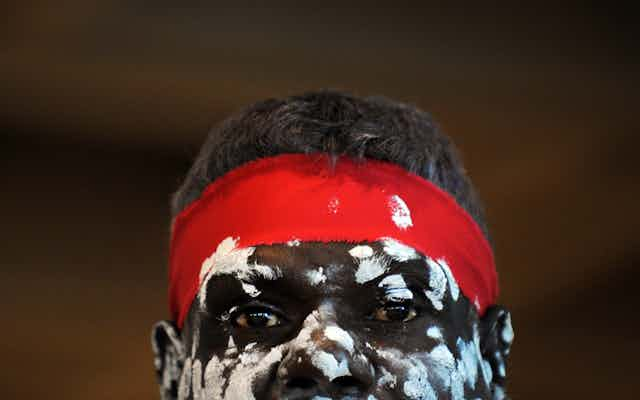Arts minister Simon Crean’s newly released cultural policy, Creative Australia, represents a refreshing change. It is underpinned by an understanding that not only are the arts closely linked to each other, but also to all Australians’ physical and emotional well-being, and to our sense of community.
Such recognition is unusual. Crean’s policy lifts “The Arts” out of what is often perceived to be its own self-referential, elitist silo, showing artistic activity to be something we can all engage with at some level. Quite simply, participation in the arts is a prerequisite for a healthy culture.
This idea is particularly relevant when it comes to Indigenous visual art and language.
There will be those who find it odd that there is such a strong focus on Australia’s rapidly disappearing Indigenous languages in Crean’s policy. Normally, both language and culture are passed on easily between generations, but for Australia’s Indigenous societies, such processes have been severely disrupted by colonialism.
That this continues to the present day is apparent in the case of the Northern Territory’s remote area bilingual education programs, which were closed down by successive governments against the clearly expressed wishes of the vast majority of Aboriginal parents.
So the fact that about $14 million in new funding has been put aside to develop community-driven Indigenous language programs is to be applauded.
Why does this matter for the arts? In many instances, Indigenous language speakers living in remote areas are those who create the extraordinary visual artworks that have thrust Australia onto the centre stage of the international art world. Indigenous art is, after all, the world’s oldest continuing artistic movement, and it is also currently responsible for the majority of Australia’s visual art export market.
Recently, for example, both Croatia and Serbia recently held major art exhibitions of works by tradition-oriented Warlpiri artists from the Central Desert of the Northern Territory, and Pitjantjatjara-Yankunytjatjara artists from South Australia. These exhibitions, sponsored by the Australian government and which coincided with Australia Day 2013, attracted a record-breaking crowd of visitors to Croatia’s most prominent art gallery.
That very old Aboriginal artists living in the most remote, inaccessible parts of the desert are able to achieve such international success is truly astonishing. But this cannot be achieved without infrastructural support. It is therefore only fitting that the 2012 Indigenous Art Centre funding is to be strengthened and that $11 million will be spent over the next four years to continue the successful Indigenous Visual Arts Industry Support Progam.
Equally, the $2.8 million funding of new and upgraded art centre infrastructure to take place at Iwantja, Mimili, Kaltjiti, Ernabella, Amata and Kalka is not only much needed, but a significant investment and will lead to job creation.
The creation of small, successful cottage industries on remote Aboriginal settlements, which closely accord with the aspirations of the local Indigenous residents who wish to maintain their culture is rightly emphasised throughout this document.
There are many other initiatives set out in Creative Australia that show, for once, government has done some very close listening to the ideas of Aboriginal people. Some of these initiatives, such as getting Indigenous opera singer Deborah Cheetham to nurture up-and-coming Indigenous opera singers and continuing generous funding support to Bangarra Dance Company are equally deserving of comment.
One can only hope this policy will have real teeth, and that in the likely event of a change of government before it is fully or even partially implemented, such a shadow will not eclipse the hope for the future of Indigenous arts and languages.

